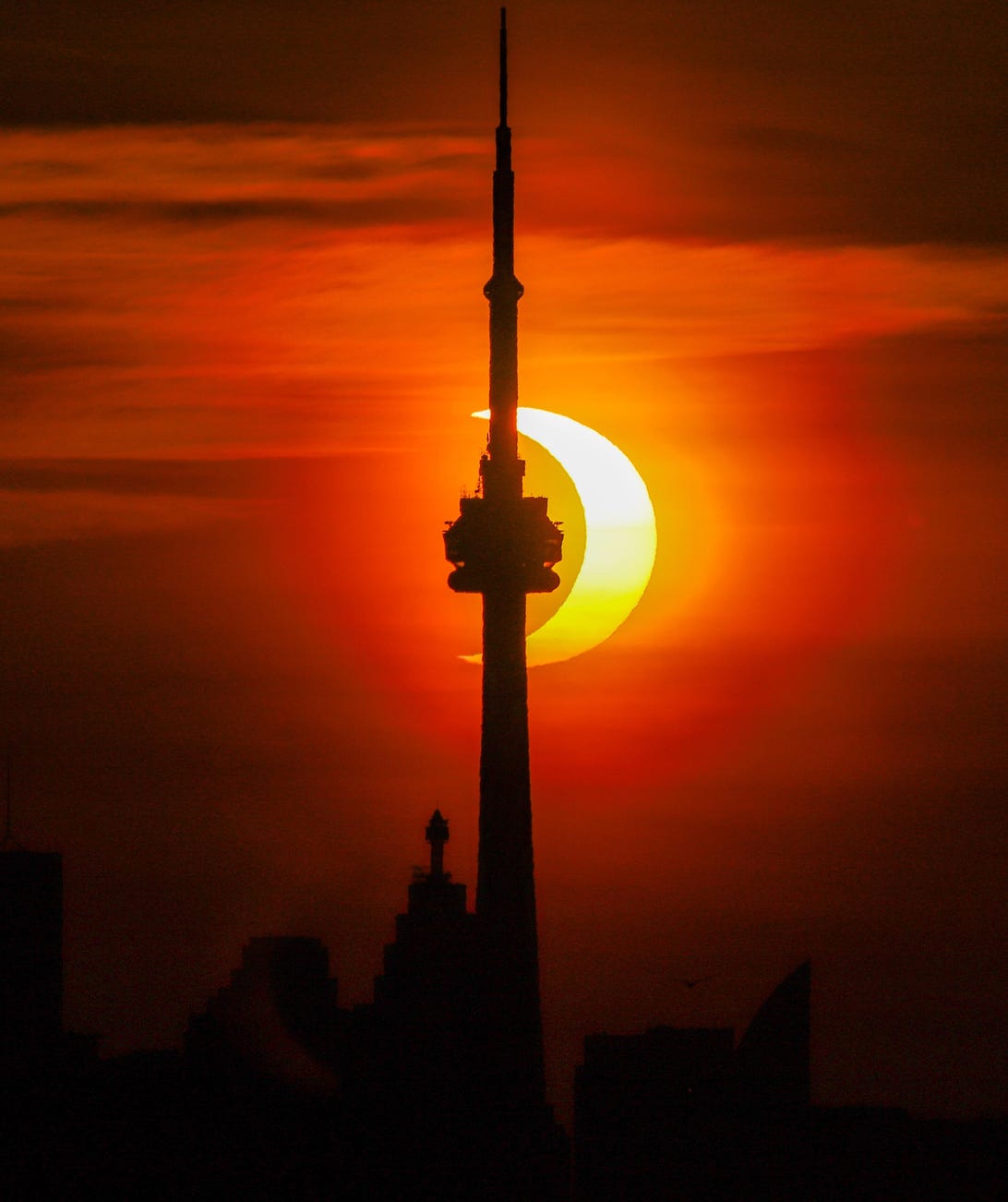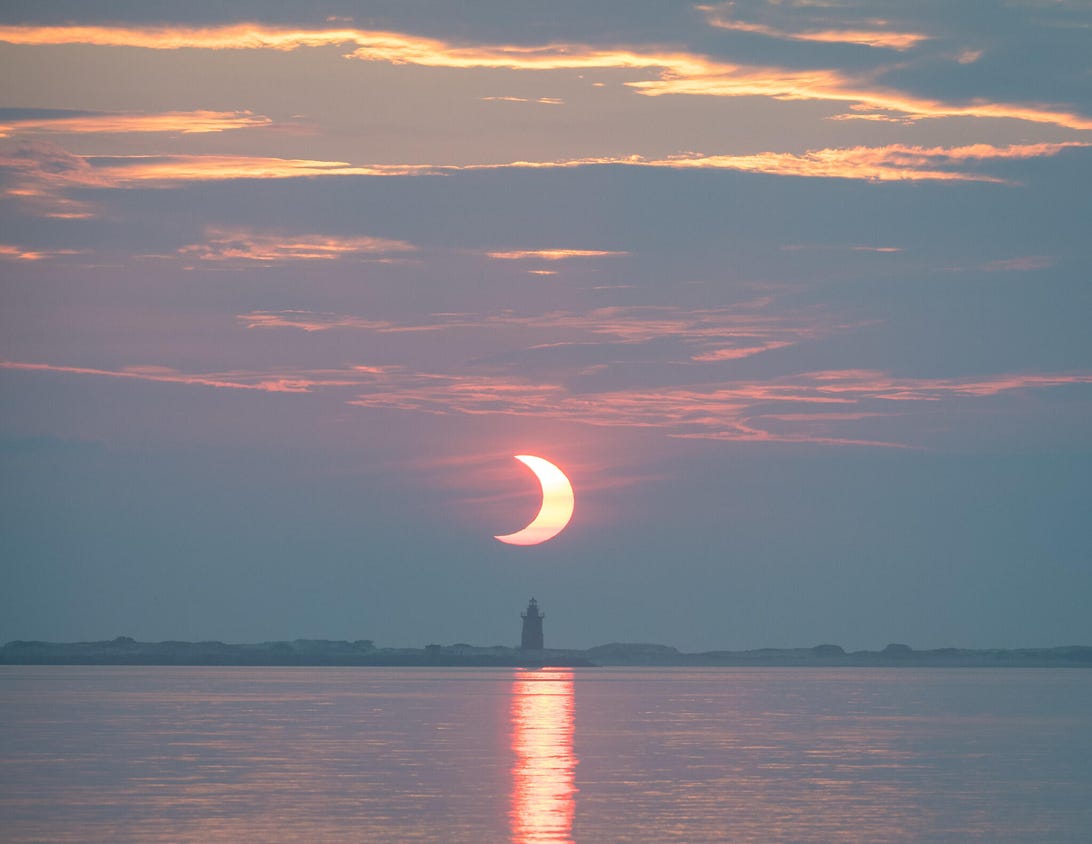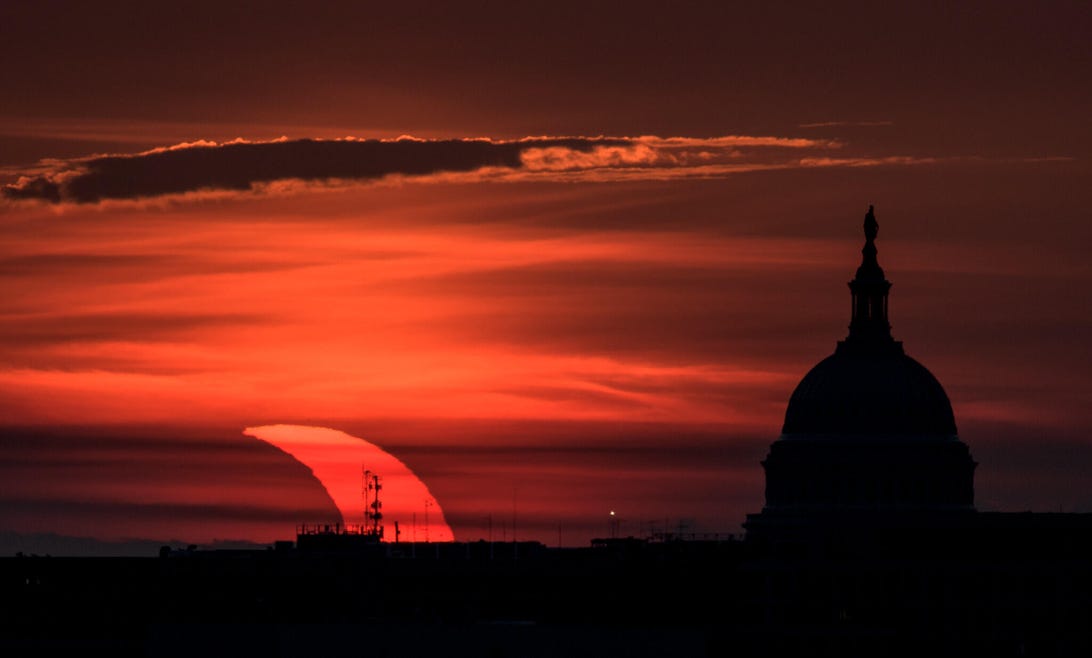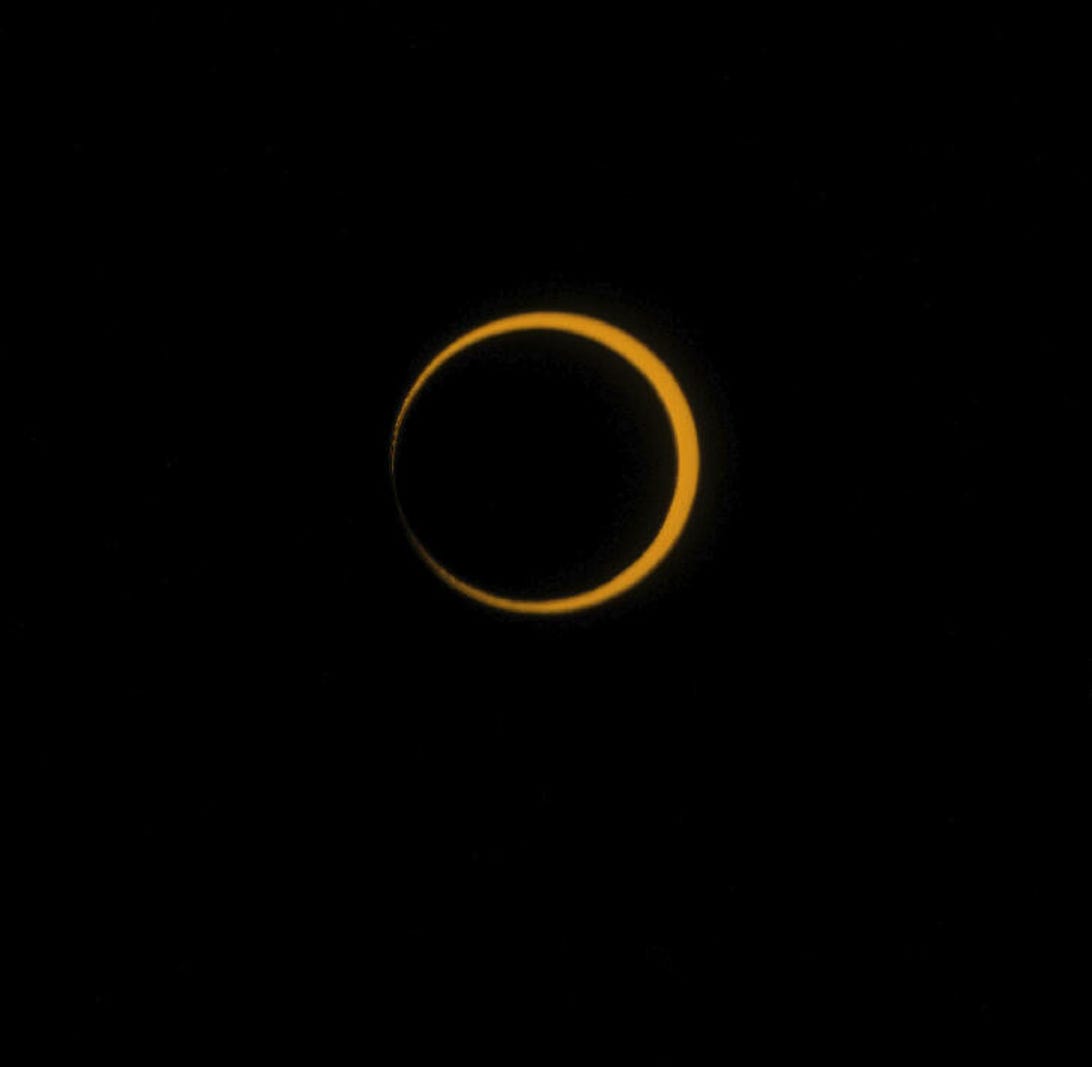
The partial solar eclipse in process as seen from Toronto.
Spaceweather.com/Felix ZaiSunrise was pretty weird for a large chunk of the eastern part of North America on Thursday. Depending on your location, the sun may have looked like a crescent, more akin to a waxing or waning moon than the sun.
This effect is thanks to a partial solar eclipse, when the darkened disc of the moon aligns itself between Earth and the sun to block out some or nearly all of it, depending on when and where you view the phenomenon. Such an event is a bonanza for photographers.
Because the timing of this eclipse lined up with sunrise over much of the US eastern seaboard, many great images got captured facing east with a wide open horizon. Some landmarks, like the Delaware Breakwater Lighthouse seen below, also add some nice perspective.

Taken near Lewes Beach, Delaware.
NASA/Aubrey GemignaniAt just the right moment, the sunrise profile looked like a fiery horn emerging from behind the horizon instead of the more familiar disc we're used to:

A partial solar eclipse is seen as the sun rises to the left of the United States Capitol building.
NASA/Bill IngallsUnlike a total solar eclipse, which can fully block out the sun for a few eerie moments, this was an annular eclipse. That means that due to the distance between the sun, moon and Earth this week, the moon does not totally block out the sun but rather leaves a ring of the massive fireball visible, hence the nickname "ring of fire" eclipse.
However, this part of the phenomenon was only visible from a relatively narrow (and largely uninhabited) corridor that stretched north from Ontario through Greenland, passing over the North Pole and continuing south over parts of Siberia. That's a pretty inaccessible slice of the Earth.
That didn't stop intrepid photographers in the few settlements along the path of annularity from capturing this unique celestial event. Vinnie Karetak captured the ring of fire from Iqaluit, Nunavut, Canada:
For those not along that path, though, there was another option to see the fiery ring. Sky and Telescope magazine chartered a special flight to fly through the path of annularity and get photographers about as close to the eclipse as possible without actually leaving the atmosphere.

Photographer Eliot Herman took this photo from about 39,000 feet over Ontario.
Spaceweather.com/Eliot HermanAfter each solar eclipse, we're left with a wealth of awesome new images and inspiration to plan ahead for the next one. Unfortunately, the only other eclipse in 2021 is arguably even more difficult to experience fully. The path of totality for a total solar eclipse on Dec. 4 will only pass over Antarctica for the most part.
Another annular ring of fire eclipse will make a swing through the western US and Central America on Oct. 14, 2023.
Plenty of time to prepare.
If you have any epic shots of this eclipse, please share them with me on Twitter @EricCMack.
Follow CNET's 2021 Space Calendar to stay up to date with all the latest space news this year. You can even add it to your own Google Calendar.
from CNET https://ift.tt/2Tk6M90
via IFTTT



No comments:
Post a Comment